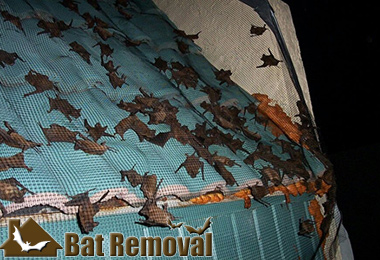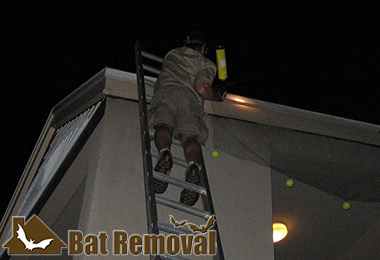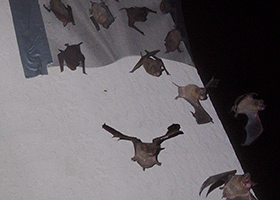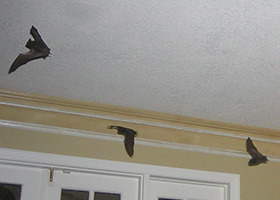Tampa Bat Removal
Welcome to Tampa Bat Removal! We are Florida bat removal specialists. It is important to know that bats are protected by Florida law, and are beneficial animals to have in the environment. We do not kill any bats during our bat removal process. Never hire a pest control company or anyone who says they are a Tampa bat exterminator. For correct and effective bat removal, you want a company that specializes in humane bat colony extraction. Our process is not only the only legal method in Florida, but it is the most effective. We have a 100% success rate in our bat control process. We perform our industry-best 32-point inspection of your house or building, and seal shut all bat entry holes down to 1/4 inch as part of the removal process, during which we remove the colony via special one-way exclusion devices specific to your architecture. Once all bats are safely out, we permanenetly bat-proof the structure. We also provide guano (bat droppings) removal and decon. Click on our Tampa Bat Control Prices page to find out more about our prices for bat control work. We work 24/7/365, and would love to talk to you about your bat problem. Call us any time at 813-337-6077 to discuss it, discuss our pricing, and if you wish, set up an appointment at your convenience, often same-day.

Tampa Building and Attic Inspections

No-kill Florida Bat Extraction

Guano Cleanouts - Serving all of Florida
Call 24/7 to discuss your bat problem.
Same-day or next-day appointments.
32-point inspection of your property.
Written estimates for bat removal project.
Fully state licensed and insured.
Residential and commercial service
100% no-kill Tampa bat extraction
Complete bat-proofing of your building
Compliance with all Florida, federal laws
Guano removal and attic decontamination
Our Service Range - 813-337-6077



5 Top Responsibilities of Wildlife Rehabilitators on Bats
To become a qualified wildlife rehabilitator, you will need to carry a state license. When dealing with the bats, you will need to have an authorization in maintaining and handling the endangered and species of concern. They also need to be vaccinated against the rabies virus that will have to be repeated every 2 years. There are also responsibilities that they will need to fulfill to increase the survival rate of the bat.
Things that Wildlife Rehabilitators Should do With Bats
The wildlife rehabilitators will go through a comprehensive training process that will educate them about their primary responsibilities. The things that they need to do will also differ depending on the species. The process will be more complex to the species of concern such as the bats.
1. Admission of Bats
In order to be admitted to the facility, the bats should not have any signs of the WNS. The wildlife rehabilitator will need to know how to diagnose the bat properly. If there is a prevalence of this disease in your country, only the bats in the region will be admitted to the facility. In case they received a call from other region, they will be directed to the local rehabilitation agency. They are also required to maintain the records of the bats that will be admitted. The record will then be submitted to the rehabilitation database.
2. Transport
The public will not be advised to handle the bat. It is not uncommon for the public to think that the bat in torpor state is dead. The rehabilitators will need to be aware on how to handle the bats safely and securely. They will need to follow a specific decontamination protocol when transporting the bats. They should only use a secured container and transport box.
3. Handling Procedures
Wildlife rehabilitators are required to follow a strict protocol when handling live bats. They should handle the bats while wearing disposable gloves. The bats that will enter the facility will need to be placed in quarantine for at least 30 days before they will be transferred into the flight cage. The quarantine room will need to be clean and disinfected. They are also instructed to separate the tree bats and cave bats.
4. Daily Care
The rehabilitators will need to provide the bats with daily care such as giving them with a clean shelter, adequate supply of food, maintaining the proper humidity and temperature, keeping the place well-ventilated, etc. Any items that will be in contact with the bat should be decontaminated before it can be used by other bats.
5. Conditioning
The wildlife rehabilitator will need to be sure that the bats will be on their optimum condition before they will be released back to the wild. Pre-release conditioning plays a key role in their release. They will need to be prepared behaviorally, socially, physiologically, and mentally before they can be reintroduced to the natural habitat.
These are just 5 of the usual responsibilities of the rehabilitators on bats. These are all intended to nurture the injured, sick, and orphaned bats and guarantee that they will be able to survive in the wild.

